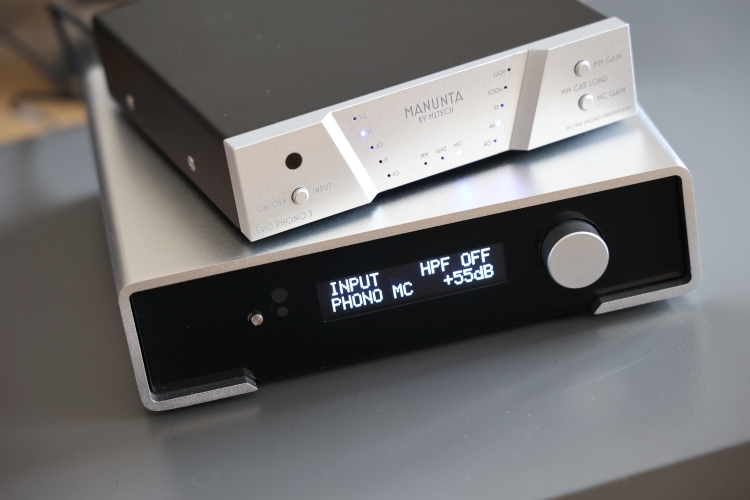
Power Supply Alternatives
Both phono stages can be further improved using a dedicated low-noise power supply instead of the supplied wall-wart switching adapter. For this purpose, Manunta has the Evo Supply 3 and M2Tech the Van Der Graaf MkII. At the time of my review, neither power supply was available, so I purchased a Topping P50, a simple but good linear power supply with corresponding specifications (5.5/2.1mm barrel jack with positive on tip). I should add that the Manunta/M2Tech manual contains a warning: “Should the user opt for the use of a power supply not provided by Manunta by M2Tech or M2Tech, we reserve the right to void the Evo Phono 3 warranty”—something to keep in mind.
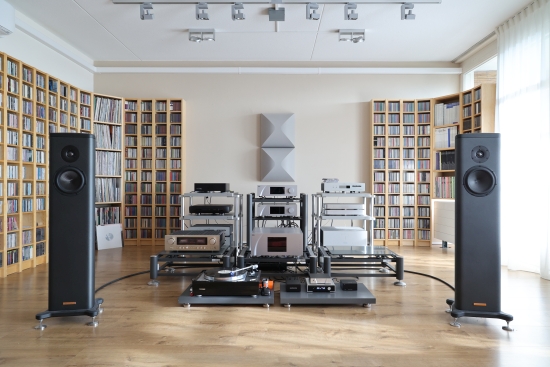
System Context
The two phono stages will be listened to in my main system, which revolves around a CH Precision L1 preamp and A1.5 power amp with Magico S1 MkII speakers. My intention was to use two turntables and a range of cartridges: the Thorens TD1601 with TP92 arm and TAS1500 MicroRidge MC cartridge and the Thorens TD1601 with TP160 arm and TAS1600 Fine Line MC cartridge, as well as an MM cartridge. Alas, logistics got in the way, and the Thorens TD1600/TP160 review sample was picked up again before the Manunta and M2Tech phono stages arrived. My next plan was to get another sample, but due to circumstances, this was delayed. To avoid further delaying this review, I will publish in two stages and add additional experiences later.
MC remains my system of choice, but I should note that MM has come a long way. For instance, I’ve heard MM cartridges that are as highly resolving and refined as the best MC cartridges I owned. Moreover, MM cartridges tend to have stronger bass and can appear more dynamic, even if these traits usually come at the expense of a measure of air, delicacy, or charm. In a later update, I will investigate this further.
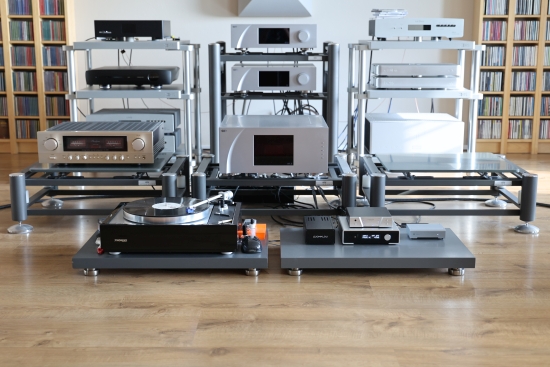
The Manunta and M2Tech phono stages will be compared to the Lejonklou Entity and Schiit Mani. All interlink connections between the phono stages and the CH preamp are made using Driade Flow Link Reference 808 cables. The speaker cables used are the Jorma Unity.
Running In
I allowed more than two weeks of power-sipping for both phono stages before starting my serious listening tests. Both units sounded remarkably robust and detailed right from the start, albeit a little cold and stiff, becoming airier, lusher, and more fluid after being switched on for two weeks. After this, the Manunta EVO Phono 3 mostly stabilized, but the M2Tech Nash continued improving after four weeks. Upon first listening, the Nash was mightily impressive in the bass and its overall powerful stance but sounded dark and very controlled. It took over four weeks for it to loosen up and become airier and more fluid. In this respect, the M2Tech Nash deviates significantly from the Manunta EVO Phono 3, so that is something to keep in mind when making comparisons.
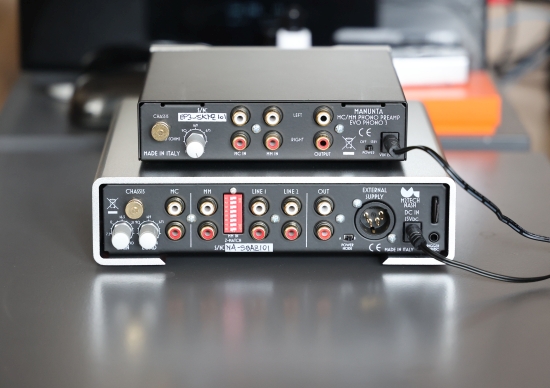
Settings
For both phono stages, the MM and MC gain stages are combined for the MC input, which means the user can freely combine two independent gain levels to arrive at an “ideal” balance for a given situation. Because the Lejonklou Entity offers only two lower loading settings and no other adjustments, I aimed to set the Manunta and M2Tech phono stages such that they provided the same output level.
With my given turntable, arm, and cartridge, I obtained the best results for the Manunta EVO Phono 3 with MM gain at its maximum 52dB setting and MC gain set to 20dB to achieve a combined 72dB of gain, which is very close to the Lejonklou’s fixed 71dB of gain. With my Thorens TAS 1500 and TAS 1600 MC phono cartridges (0.4 mV), this is on the high side, but the CH Precision L1 preamp has more than enough headroom to facilitate this. Nevertheless, with some records, I achieved a sweeter, more relaxed, and arguably more musical balance using 15dB of MC gain. For the Nash, I used the lowest MM gain setting, 55dB, and adjusted the MC gain via the potentiometer on the rear to obtain the same level as the Manunta EVO Phono 3.
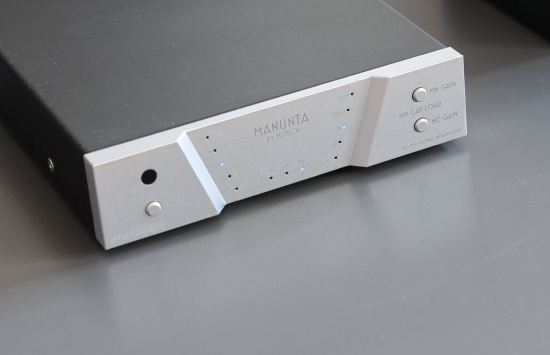
Listening – Manunta EVO Phono 3
The Manunta EVO Phono 3 impresses with its energetic, propulsive, crystal-clear, lively, and impressively dynamic presentation. Even with its standard wall-wart switching power supply, it offers a tighter, cleaner, more open, and more expressive delivery than the Lejonklou Entity, something I did not expect, given the large price discrepancy.
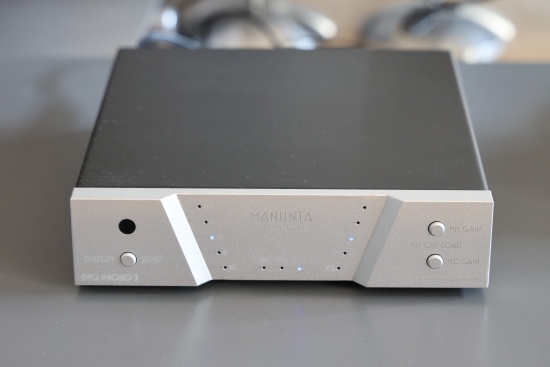
Some (cough-many) of the affordable phono stages I heard have what I perceive as a synthetic tonality. To my delight, the EVO Phono 3 sounds beautifully pure, neutral, and natural, if a little thin and bright with the standard power supply, but I will get to this. The little gem can play subtly and delicately or all-out, and it can change between these extremes in a heartbeat. It is great with rhythm and consistently makes my foot tap. It’s got an articulate, upbeat, and well-paced presentation, which, combined with an open and communicative midrange and precise and airy treble, makes for an enormously engaging listen.

Throwing the Schiit Mani into the mix, I expected it to sound pretty decent. After all, given its entry-level price, the Mani also surprised me when I first heard it many years ago. However, after listening to the EVO Phono 3, the Mani sounded quite disappointing. Sure, it has a decent amount of delicacy and air, and it is quite linear and transparent, but it sounds comparatively flat, fuzzy, and synthetic, and worse, it is dynamically restrained and frankly dull compared to the expressive and exciting Manunta.
Moreover, I did not expect this to happen, but in some aspects, I even preferred the Manunta over the twice-as-costly Lejonklou. Its dynamic attack, bass precision, and overall crispness first pulled me over the line, while the incredibly communicative midrange reeled me further in. It is amazing what this little gem achieves at such a low cost.
Sure, with the supplied power adapter, the EVO Phono 3 is a little lean and bright, a little spicy, and even on the edge of being edgy, but it never crosses that edge into sharpness, although it does highlight when recordings are also on the hot side. Although neutral and quite linear, it is a little low on tonal saturation. Don’t misunderstand this to mean the EVO Phono 3 sounds analytical or even clinical, as I find the preamp to sound very human and super-lyrical, but it will not be the ideal phono preamp for those searching for tube-like qualities such as lushness, saturation, or warmth.
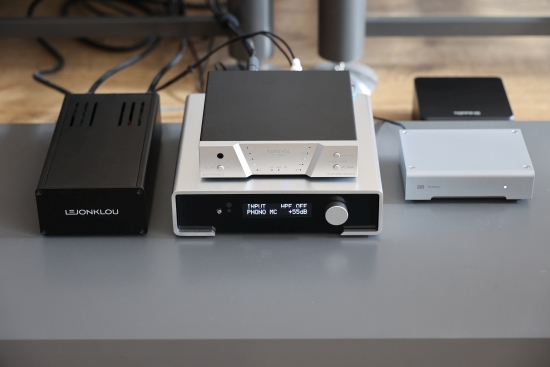
Still, listening to the Lejonklou Entity after the EVO Phono 3 briefly made me doubt its merits. But fair is fair; the Lejonklou has a lusher and dreamier presentation with fuller bass, deeper tonal saturation, and more finesse, even if it trades in quite a bit of bite, speed, and expression. On balance, what the Lejonklou offers are qualities typically not found until a certain price point, and these qualities can weigh heavier than excitement and dynamics, depending on the system and individual preferences. Personally, I found it hard to choose between the two at this point, both preamps making strong cases for themselves in very different manners.
There’s still the matter of power supply, and I can already reveal that this makes a large difference. But before I report on this, I want to continue my comparisons of the EVO Phono 3 and Nash, both in stock form.
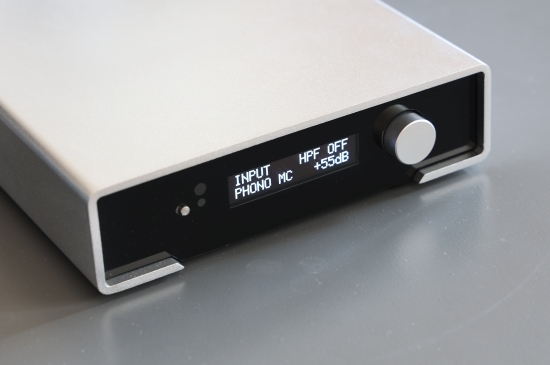
Listening – M2Tech Nash
Going from the Schiit Mani to the Manunta EVO Phono 3 was a revelation. But fair warning: if the budget does not stretch further, better not listen to the Nash!
I started out using the Nash with the minimum MM gain setting of 55 dB via the front panel and then adjusting the rear-panel pot to match the sound level of the EVO Phono 3. This way, it already sounded great, but I found it sounded even better when I used a higher MM gain setting. Depending on system synergy, there’s bound to be another optimum, but I found that the sound was most toe-tapping and enthusiastic when using the highest MM gain setting of 65dB, and a low MC gain of 7,5dB.
Upon swapping, it is clear that the Nash shares DNA with the EVO Phono 3. Just like the EVO Phono 3, the Nash has an immediately enthusiastic, toe-tapping, and engaging performance, and it is just as pure and neutral through the midrange. But then, the differences start to stand out. The biggest difference is the Nash’s amazingly concrete and rock-solid bass. Even with the standard wall-wart switching power adapter, the Nash may have the best bass I have heard from any phono stage at any price! It is not just rock-solid but also fast and nimble, not at all fat or thick, and super-articulate.
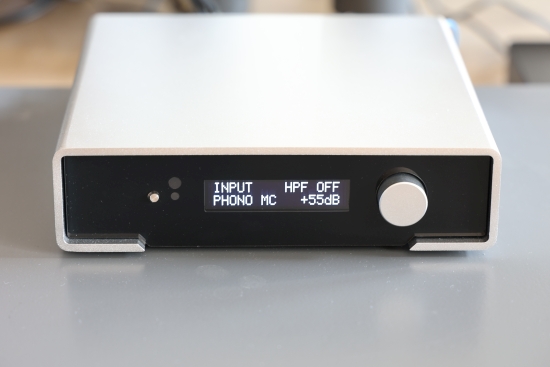
The EVO Phono 3’s timbre was already non-synthetic but could do with more color and substance, and this is where the Nash delivers in full. In comparison, the EVO Phono 3 does a good job with timbre and texture, but it’s only when stepping up to the Nash that these are rendered in full. With its more robust and impactful nature, more accurate pin-point soundstaging, and more air between performers, the Nash provides an even more convincing and realistic performance.
In many ways, the Nash reminds me of the Pass Labs XP17. I would have liked to have it available for comparison, but the local distributor did not have it in stock. I can’t make any hard claims because so many years have passed since I heard it. All I can say is that my gut feeling is that they are competitive, and given the large discrepancy in price, that is an interesting observation.
You could say the M2Tech Nash has a more controlled stance than the Manunta EVO Phono 3. It offers a more precise rendition with a higher level of articulation and control, making it more analytical. The EVO Phono 3 always sounds effortlessly fluid, but the Nash can be relatively drier and more matter-of-fact. This is just a fact of life: with higher precision comes more control. It is more steadfast but also very dynamic and hugely impactful!
At this point, one may start to consider synergy. For instance, I imagine that the Manunta EVO Phono 3 simple design has fewer stages of regulation and a less precise amplification topology, which happens to make it work very well with my (inherently very precise and relatively dry) Thorens TAS 1500 Micro-Ridge cartridge. This made me wonder how the cards would fall when the TAS 1600 Fine Line cartridge was mounted in the TP 160 knife-edge tonearm. For now, that question will have to remain unanswered. But as soon as I have secured another turntable, I will revisit this topic.
Next: Linear Power Supply and Conclusion
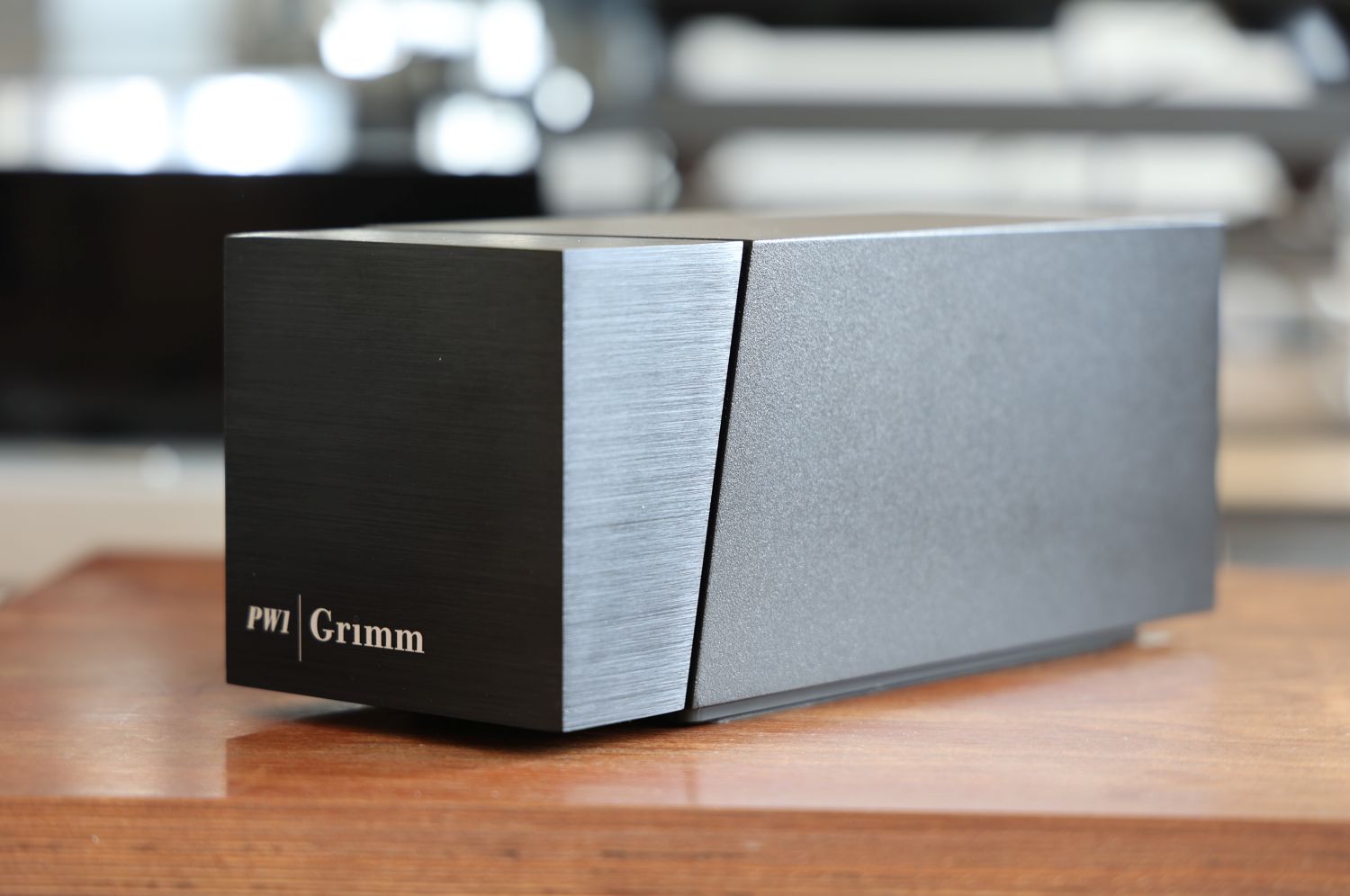
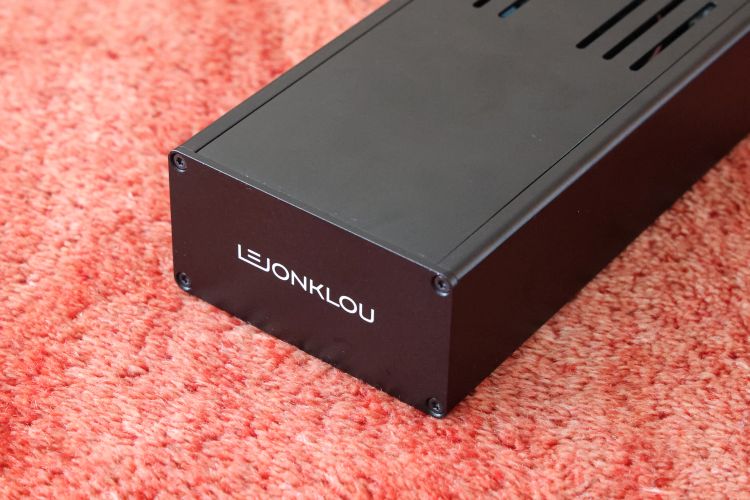
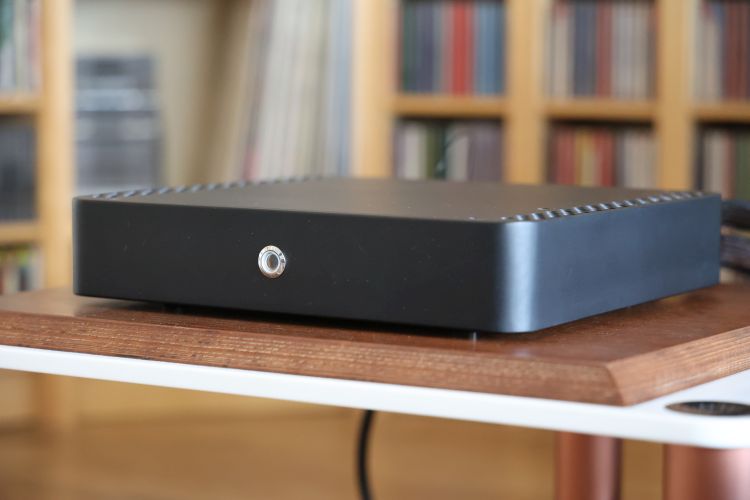
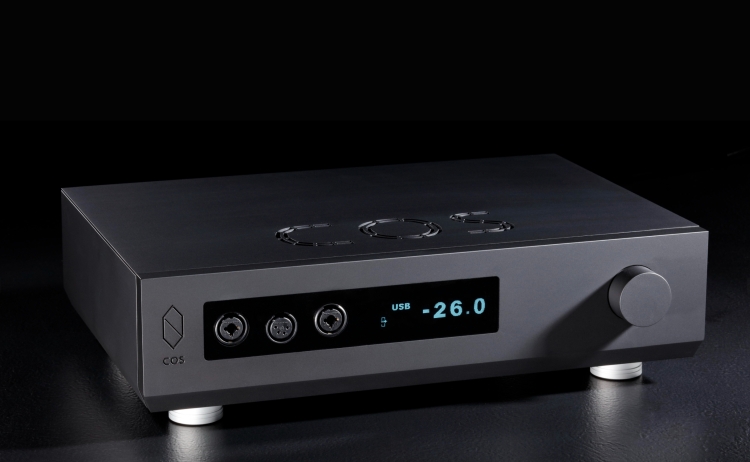
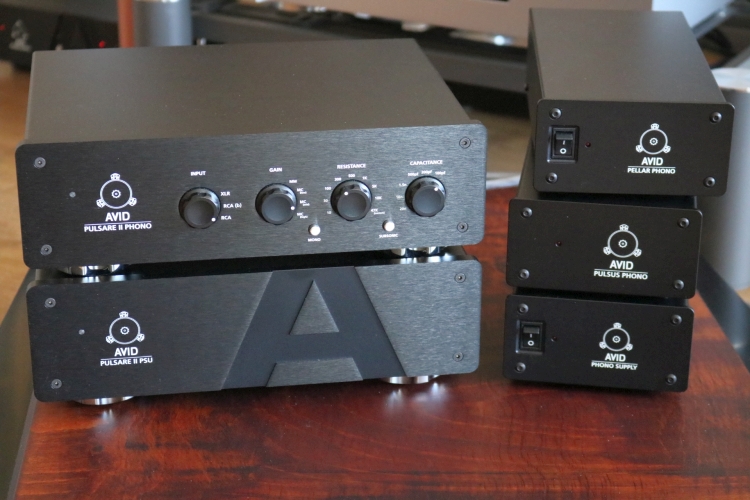
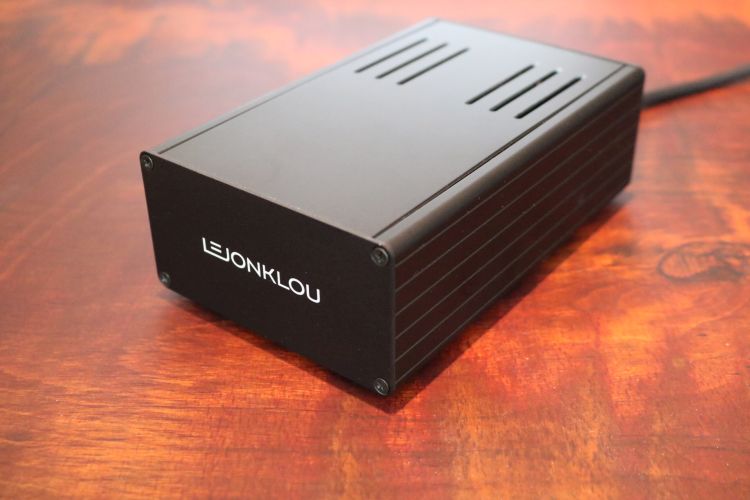
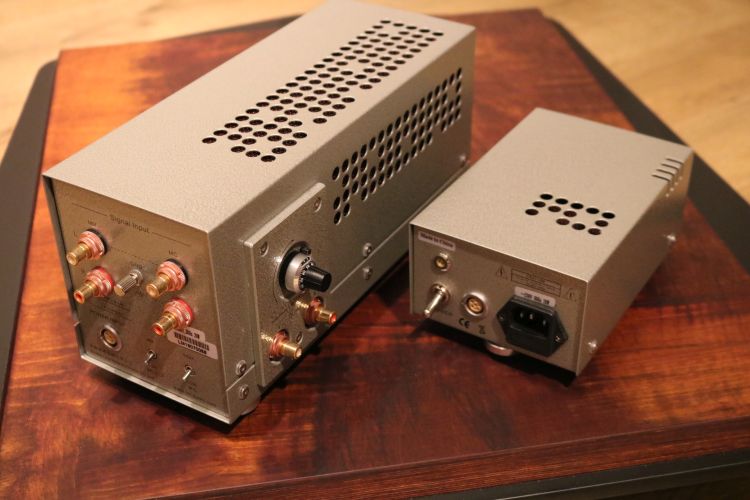
Hi Christiaan, any further updates on the use of better power supplies for these two phono stages?? Thanks Luke
I have a review round 2 in the works using a new Thorens turntable with TP 160 tonearm and two different cartridgesm which will be published soon. It re-assesses the standard versus Topping PSU, and reaches an updated (very positive) conclusion, but alas, I do not have the Manunta or M2Tech PSUs.
HI Christiaan, I have acquired the Van Der Graaf Mk2 power supply for the Nash ( Nagra VPS is now hardly ever used). Played through an Audio GD master 1, Nuprime amg sta se and Wolf Son speakers I must say compared with its standard power supply its not night and day. I had to go back a few times to be clear about the advantages of the VdG power supply. However the improvements I hear are 1) slightly more detail due to a slightly blacker background, 2) better bass control and better defined pitch 3) more clarity and separation throughout 4) the music is now present as a whole coherent force rather than as individuals playing individually. Downside is that a little bit of tonal warmth and solidity is given up for this compared to the original power supply. I guess for me 2 and 4 win the day but I could still happily live with the original power supply!!
Thank you for sharing your impressions! I had a similar experiences between stock switched supply and the Topping P50. Whereas the difference between the two was very large with the Manunta, the differences was indeed much smaller with the M2Tech. However, in my case, the Topping did worse with the latter than the standard supply, especially in terms of control and articulation. If the Van Der Graaf Mk2 has better control, pitch, clarity, and detail, I would call that a big win, and definitely something to check out for myself! PS, the “loss” of a little warmth as you describe it may well be the omission of the blur/haze of the switched supply. In effect, I think it has less coloration with the upscale supply. In any case, I agree, the Nash is great, even with the standard supply.
Hi Christian, can I just take this opportunity to thank you for all your brilliant and honest reviews. Each time I buy one of your recommended products I am blown away. I am not young and aware of how most reviews need to be taken with a pinch of salt -but not yours!! My latest addition was the Mad Scientist jumper cables for my Wolf Sons…. wow what a difference over the stock cables, completely transformed the speakers!! I acquired quite cheaply some used Audio Gd 2H monoblocks and again I can only say i was blown away by the sound and the accuracy of your review. What a bargain. Both Foilflex and Driade Fluid have put to rest all cables that came before them. I don’t know where to stop!!! Thank you so much. Please continue this great work you are such a breath of fresh air after following hifi for 40 years and I am not the only one saying this.
Hi Luke, thank you so much for the great feedback!